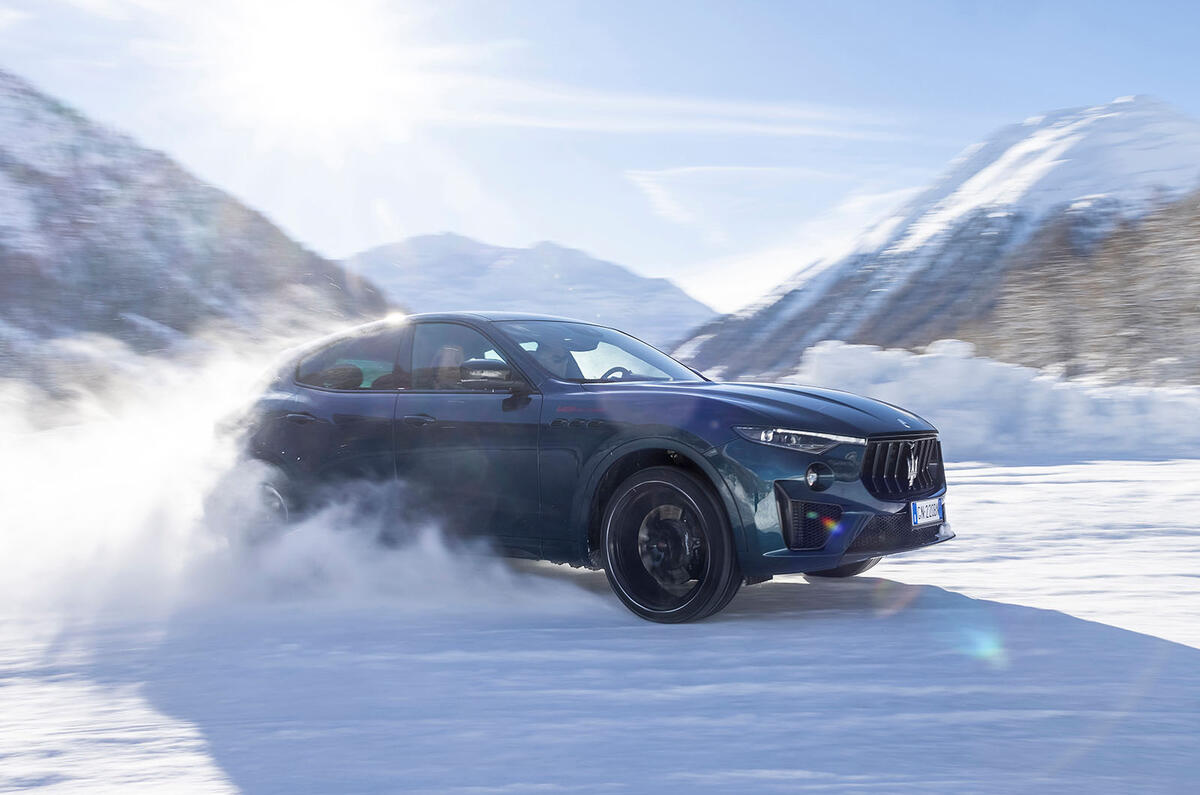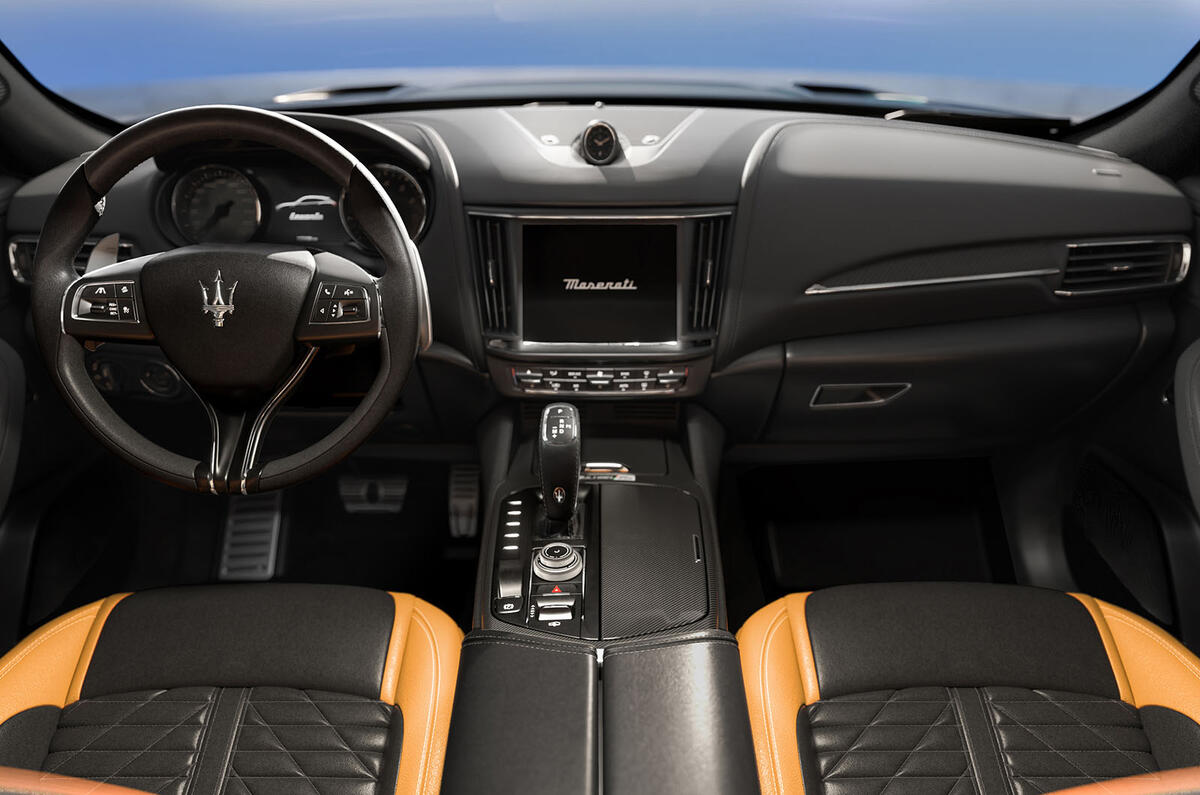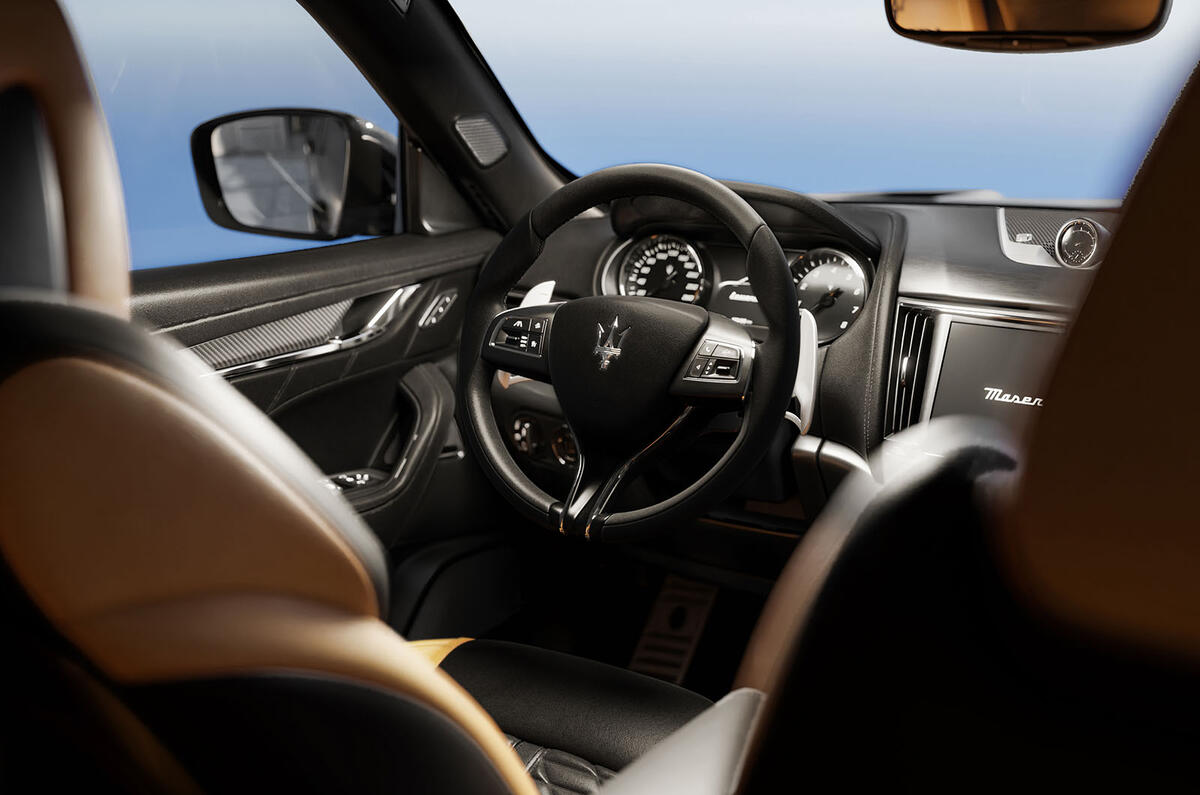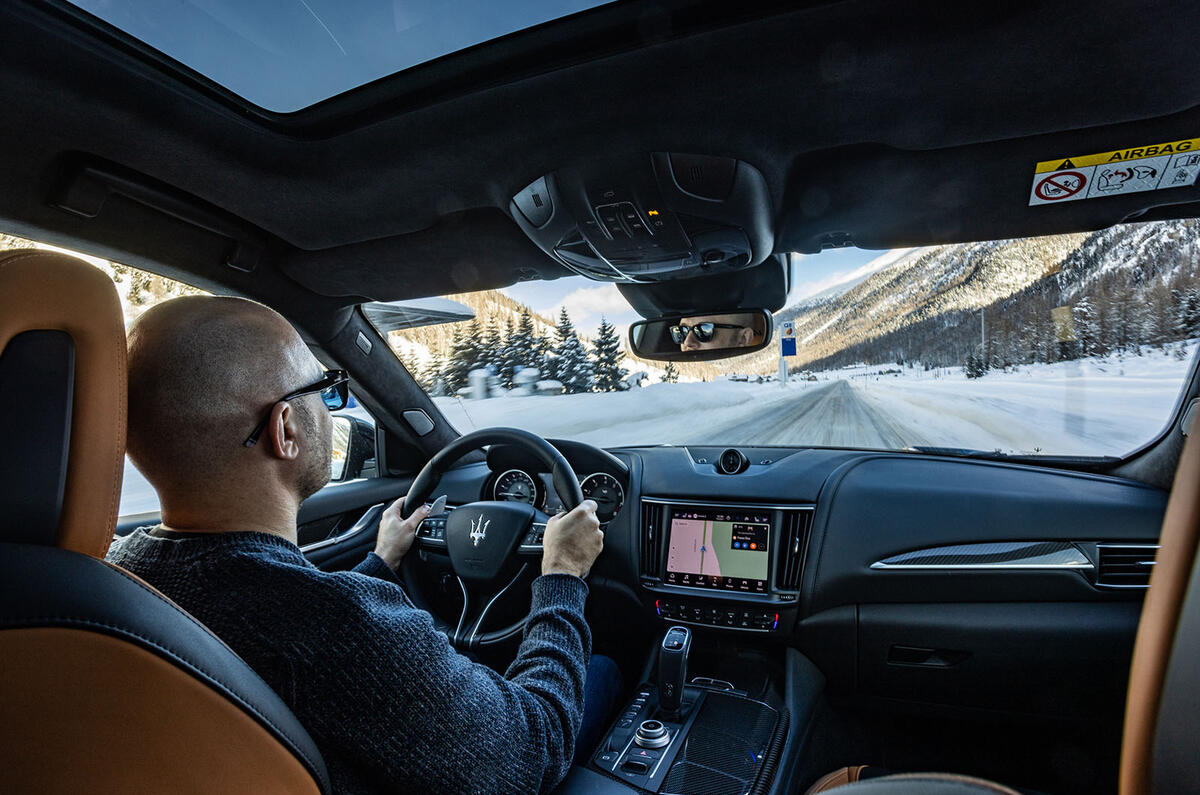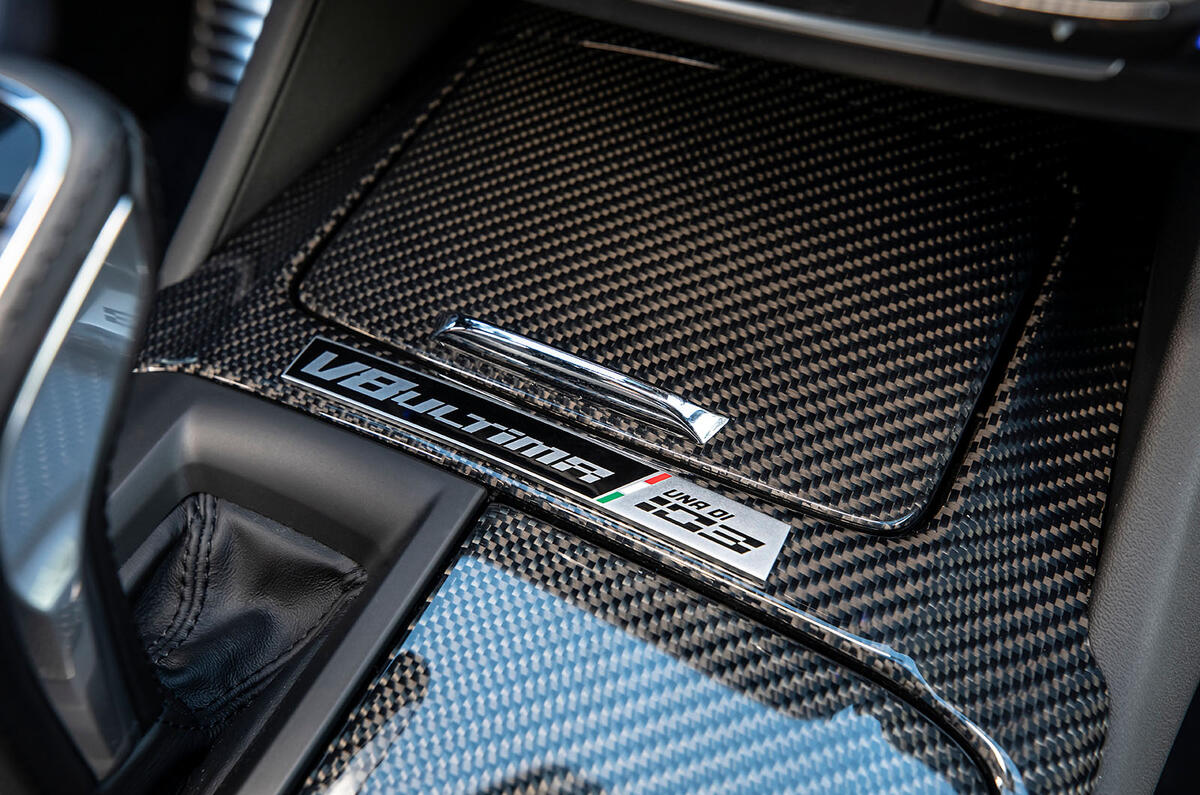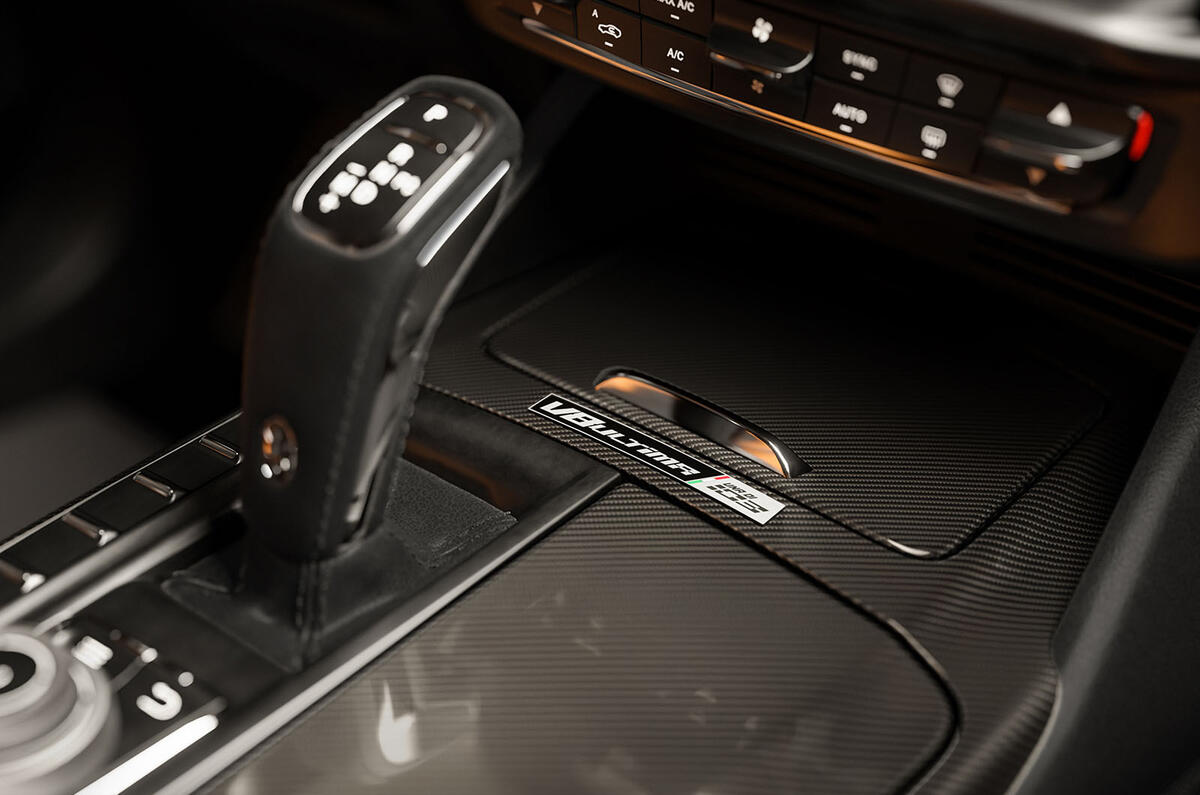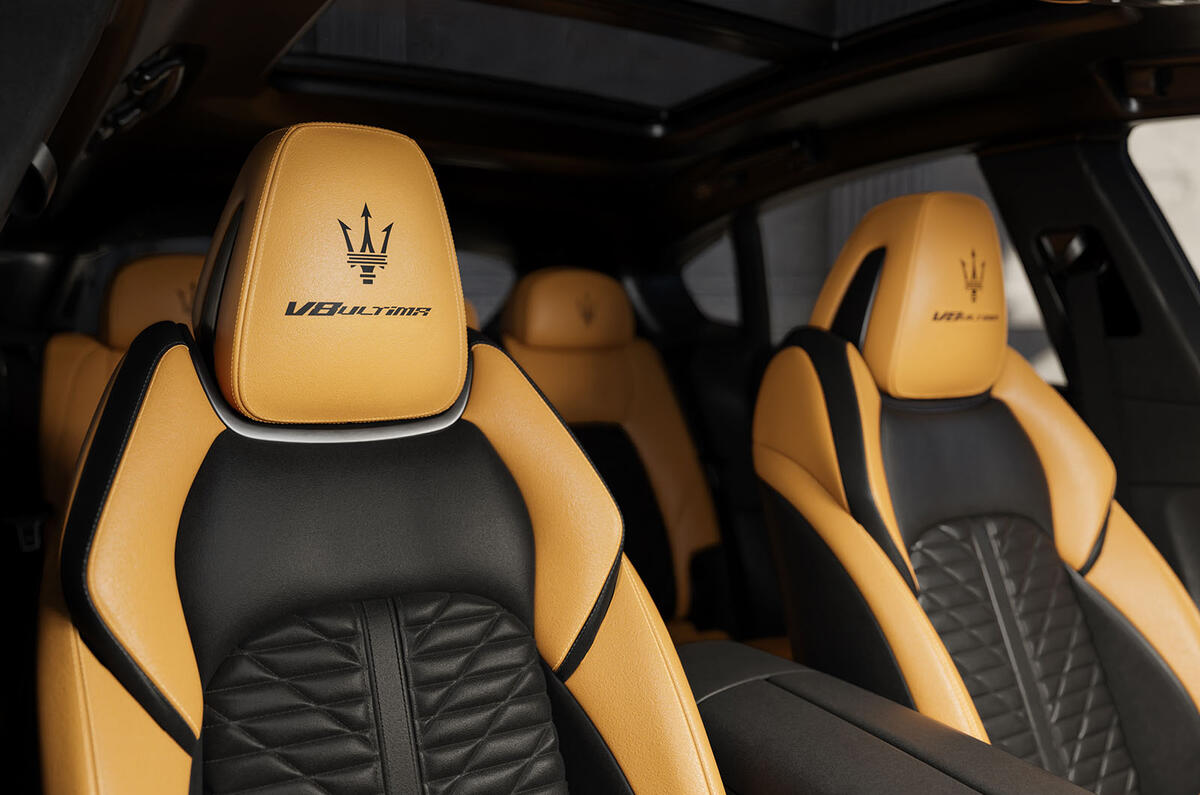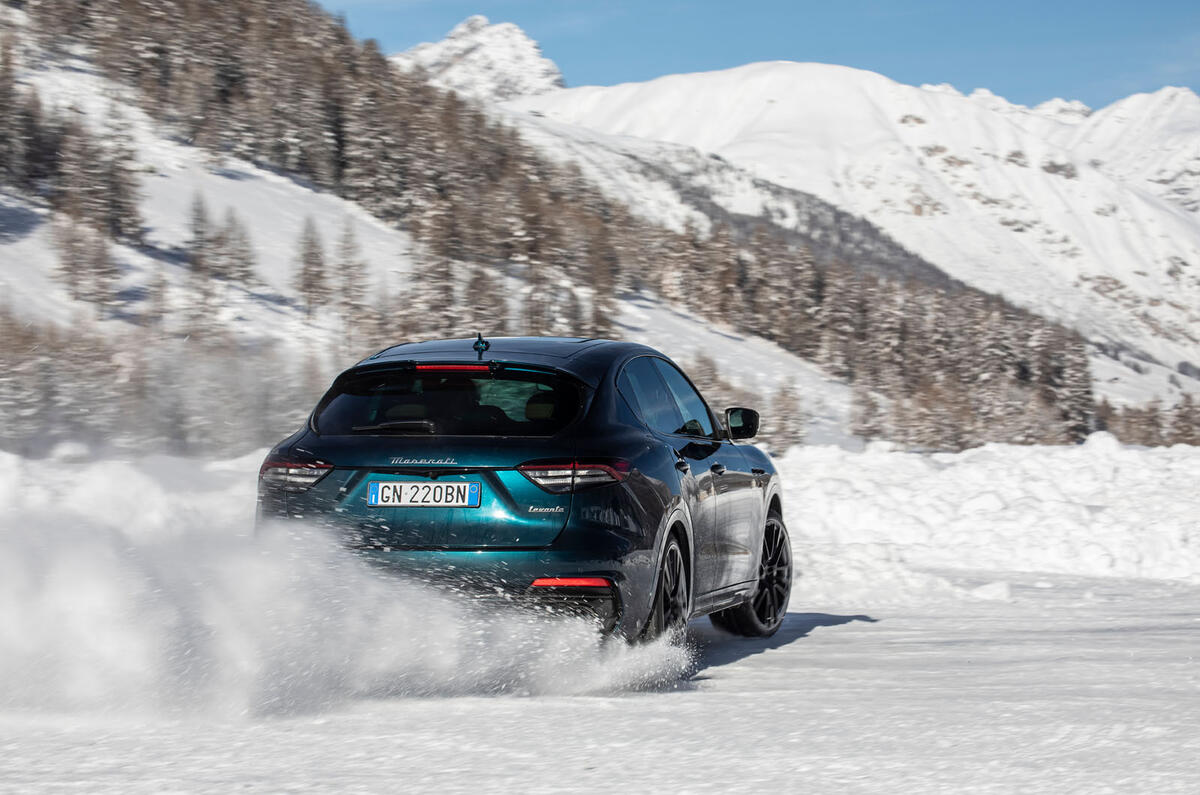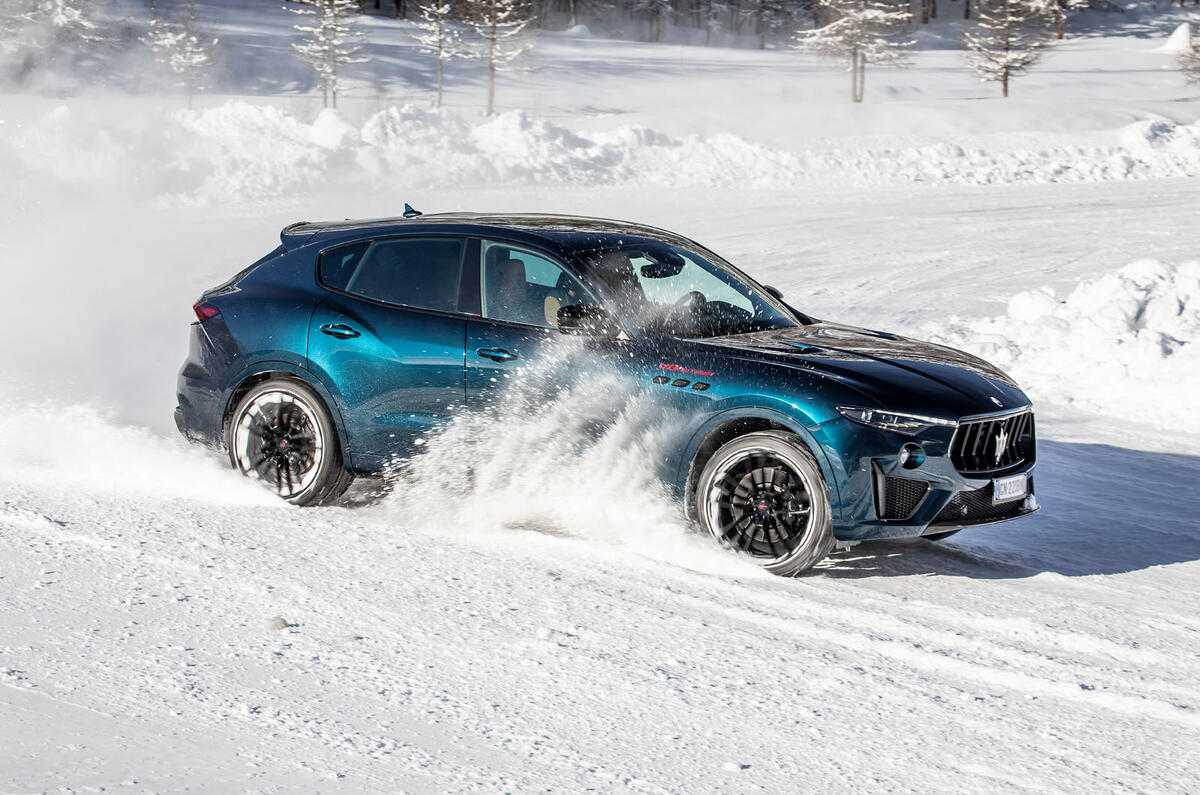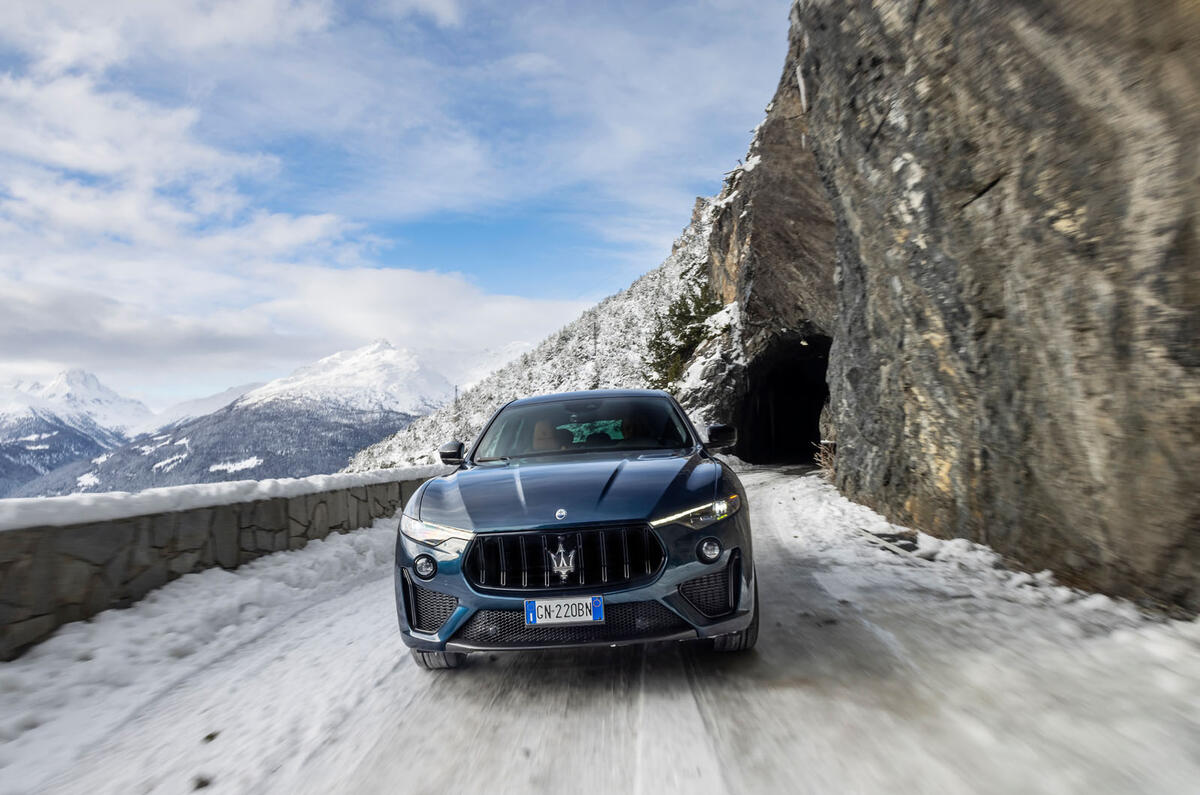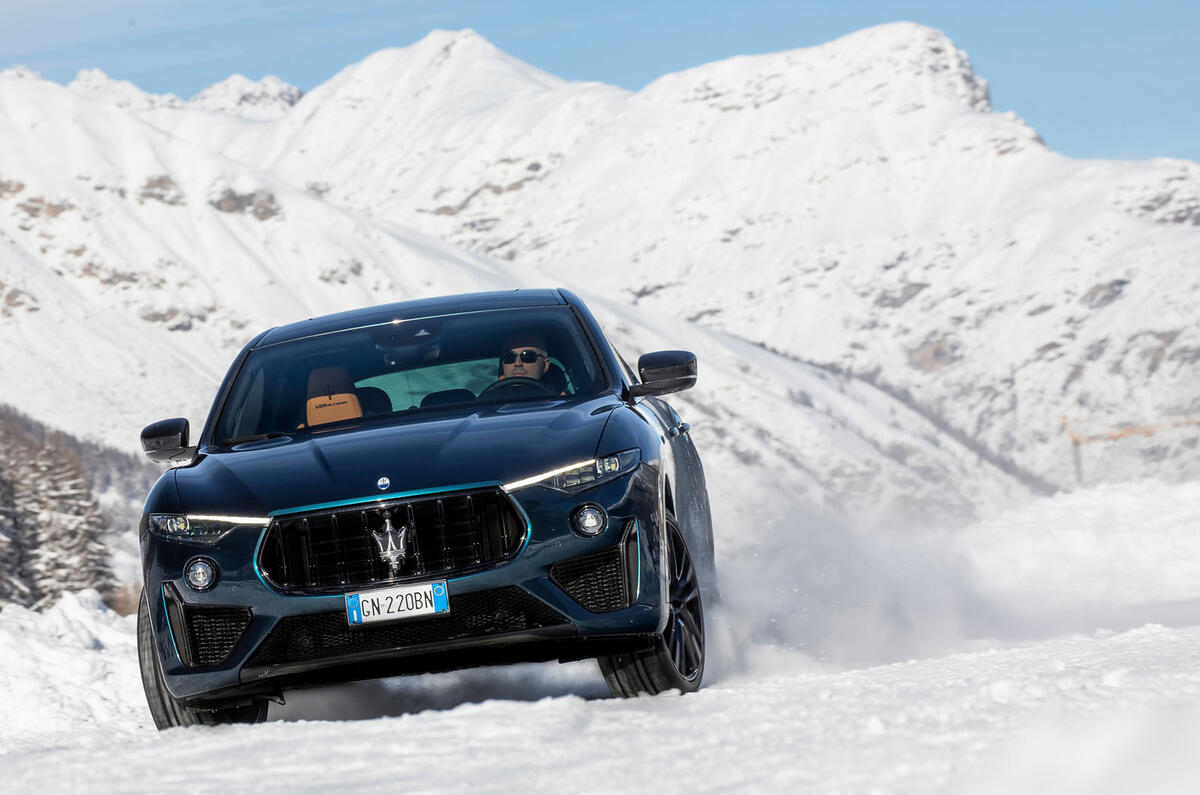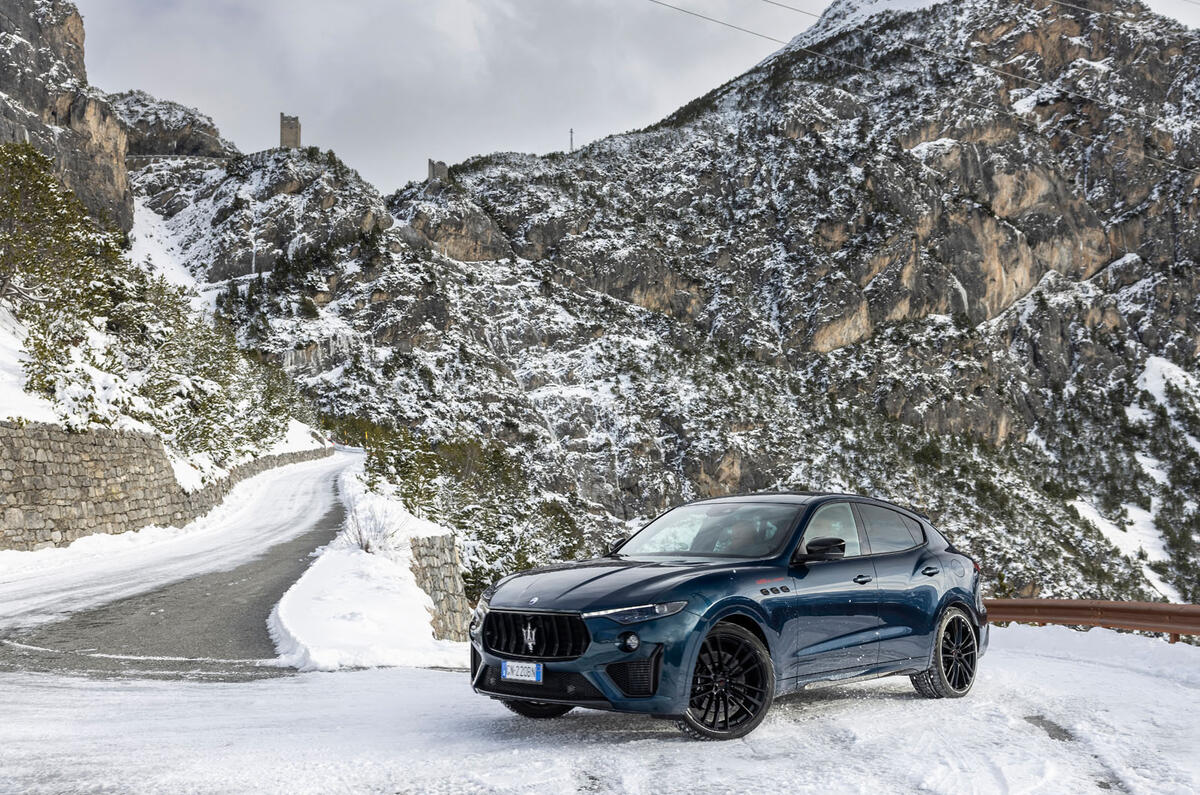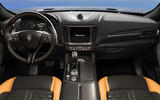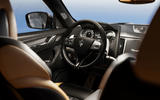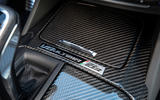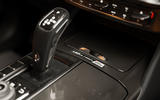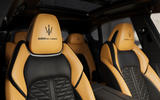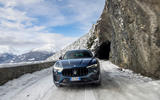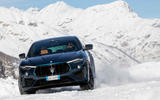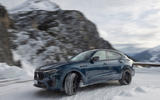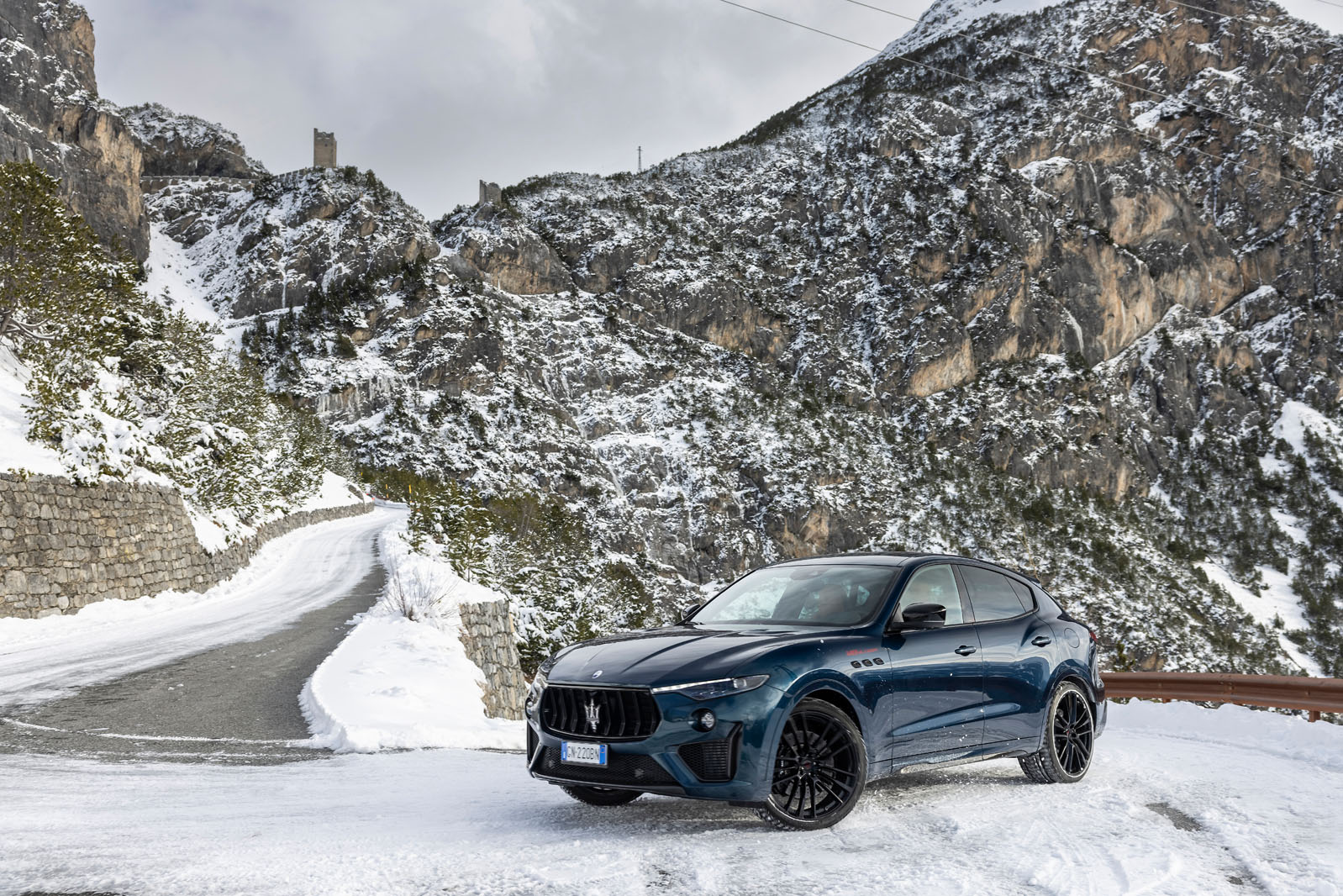Putting the Levante's interior under the microscope is an undertaking that’s as exasperating as it is delightful. On the face of things, Maserati seems to have worked hard to create a space that looks and feels not just upmarket but alternatively so, to imbue a distinct sense of identity, richness, luxury and flair next to the more serious, purposeful interiors of rivals from Porsche or Audi.
There's real character here, and those of us with even a few droplets of petrol in our veins will whoop with delight at a car hanging tenaciously onto gorgeous analogue dials. Not least if you’ve opted for the V8 and thus have a real enthusiasm for chasing the 7000rpm redline to fully utilise them.
We also liked the long, fixed metal paddle shifters, which lift the ambience successfully in both Maseratis and Alfa Romeos and make you wonder why most other brands make do with smaller, often plastic alternatives. You’re far more likely to manually shift in here than in its foes.
But these almost romantic initial impressions begin to erode under closer inspection. For all the flashes of character and quality in some places, there are frustratingly cheap and unergonomic controls elsewhere, the oddly flaccid feeling gear selector among those.
Their abundant presence doesn’t make for an endearing juxtaposition against the more tasteful elements of the cabin. The plasticky controls on the centre console look particularly jarring against the wood veneer, while the hard grey moulding that surrounds the infotainment screen is similarly unattractive.
The row of climate controls immediately below might work well from an ergonomic point of view but, as with so much of the switchgear, it lacks the tactile appeal and material richness expected for the price.
The Levante makes use of Maserati’s Touch Control Plus (MTC+) infotainment system, which is effectively a reskinned version of the old FCA UConnect set-up.
This means an 8.4in touchscreen is the main means of interacting with and controlling the majority of the Levante’s functions, which include sat-nav, heated seats and steering wheel, DAB radio and Bluetooth connectivity. Apple CarPlay and Android Auto compatibility are also included as standard.
While the operating system itself is easy enough to learn, it’s not always quite as slick as you would expect a near-£80,000 car’s infotainment suite to be: there can be a noticeable delay when switching between menus and the graphics for the sat-nav aren’t outstanding.
Setting up Apple CarPlay or Android Auto mirroring is easy, but the lack of any apparent shortcut buttons makes navigating back to the menu to change the radio station or adjust seat heater temperatures a frustrating endeavour.
Nor is it as practical as its contemporaries, lagging behind the Porsche Cayenne and Range Rover on both rear passenger and boot space. Still, we suspect that Levante buyers are fully aware that they’re avoiding more rational rivals for something more riveting.
Interior space is reasonable but not as abundant as its five-metre footprint suggests it should be. Despite being bigger than both the Range Rover Sport and Cayenne (in both length and wheelbase), the Levante comes up short for rear leg room.
The Levante’s 710mm compares with 740mm for the Range Rover and 790mm for the Porsche. Admittedly, four adults will fit comfortably, but Maserati’s packaging efforts still seem questionable.
This is especially true when you look at boot space as, somehow, it’s the Maserati that trails again. With the rear seats in place, the Levante has a 580-litre boot; the Porsche’s and the Range Rover’s, meanwhile, are 745 and 784 litres respectively.
For the most part, the Levante avoids feeling like an FCA parts-bin haul – but not always.


